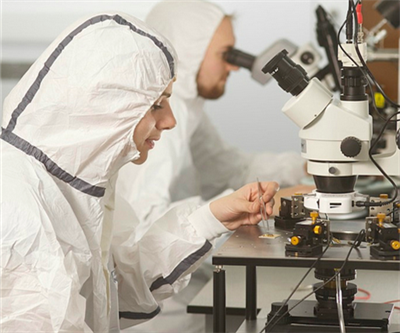
Graphene: Hailed across the globe for its lightning speed, ability to remove nuclear waste from water and potential in treating Alzheimers disease. Yet, the 100%-carbon substance has been leading a sad existence. Graphene was condemned to spend all eternity in a lab because of one flaw: When used as a transistor, it can’t be switched off. It’s a super material but only on paper.
Not any more, say researchers at the University of California, Riverside. Guanxiong Liu and his team believe they have found a way around graphene’s biggest problem.
The answer, as it turns out, is outside the proverbial box. Researchers say that engineers should stop trying to create an artificial band gap – which would allow graphene to “switch off” – and stop trying to make this unconventional substance into a conventional semiconductor.
Rather, they should rely on the phenomenon of “negative resistance,” Liu to MIT’s Technology Review. This would force voltage to drop as a current runs through the graphene transistor.
“We intentionally avoid any attempt to artificially induce an energy band, which would make graphene ‘more-silicon-like,'” Liu told the Review.
If test models of the team’s idea go well, the future of processors really could be graphene’s. Bye-bye, silicon.
Creative Commons image by: University of Exeter
3 Comments
Dr. X
Uh-oh, that book on the MOSFET transistor I just bought is about to become a paper paperweight.
petsynot
Just wait… Graphene/carbyne is set to amaze us electronically, with or without negative resistance. Once we grow hybrid 2D materials, with one atom wide conductors separated by one or more atom wide insulators, and all the other possible variations (nano light/electromagnetic highways on a chip or ribbon, etc), the future is mind-blowing.
ivan
now, if only they would apply graphene to a swathe of Tesla’s ideas, just think of the possibilities.